Subfamily Asteroideae Higher classification Ragworts | Tribe Senecioneae Rank Species | |
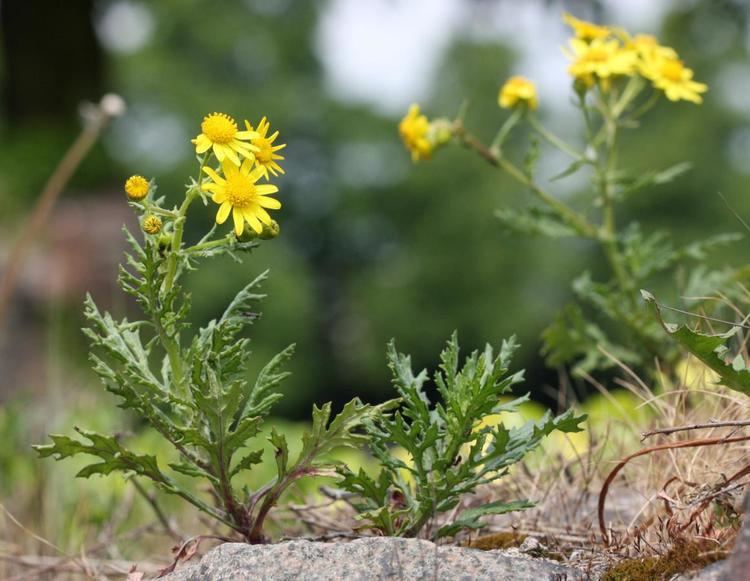 | ||
Similar Ragworts, Daisy family, Squalidus, Senecio cambrensis, Senecio viscosus | ||
Senecio squalidus, known as Oxford ragwort, is a flowering plant in the daisy family Asteraceae. It is a yellow-flowered herbaceous plant, native to mountainous, rocky or volcanic areas, that has managed to find other homes on man-made and natural piles of rocks, war-ruined neighborhoods and even on stone walls. These habitats resemble its well drained natural rocky homeland. The plants have spread via the wind, rail and the activities of botanists. The travels and discriminative tendencies regarding propagation of this short-lived perennial, biennial, or winter annual make it a good subject for studies of the evolution and ecology of flowering plants.
Contents
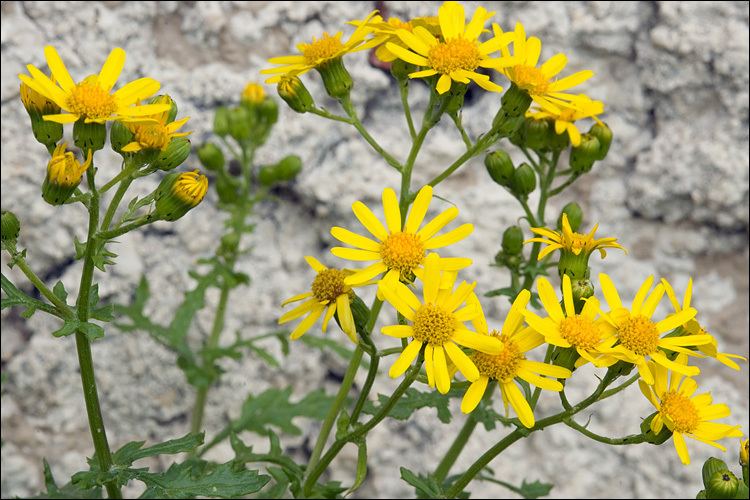
Description
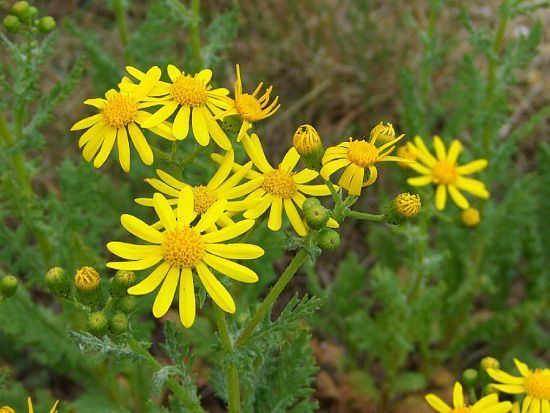
Like all members of the Asteraceae family, Senecio squalidus has a composite flower head known as a capitulum. What look like single flowers are actually a cluster of florets, each petal or ligule being a flower, or floret, possessing its own stamen and capable of producing the specialized seed of the family Asteraceae, the parachute-like achene.
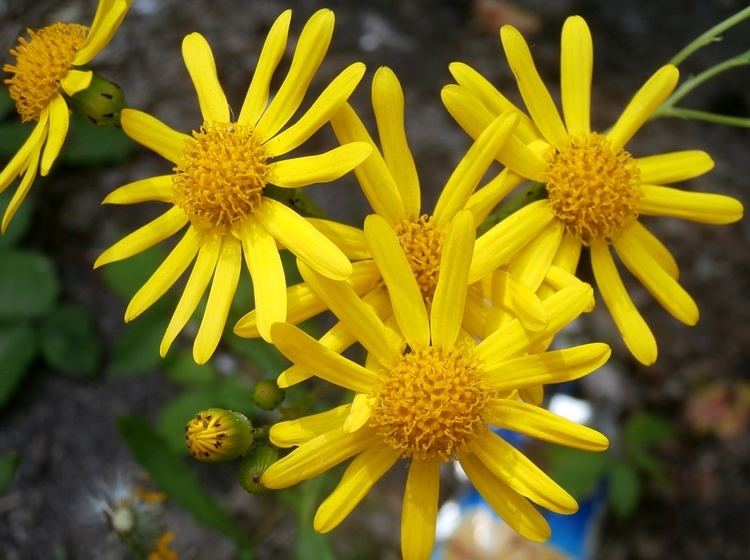
Oxford Ragwort is a short-lived perennial, a biennial, or a winter annual and grows in a branched straggling form to between 1.5 feet (0.5 m) and 3.3 feet (1 m) depending on conditions. S. squalidus prefers dry, disturbed places, cultivated and waste ground, walls and railway banks, flowering from March to December and reproduces from seed.
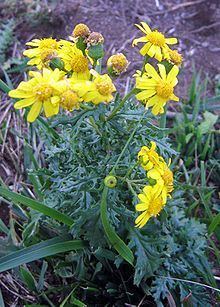
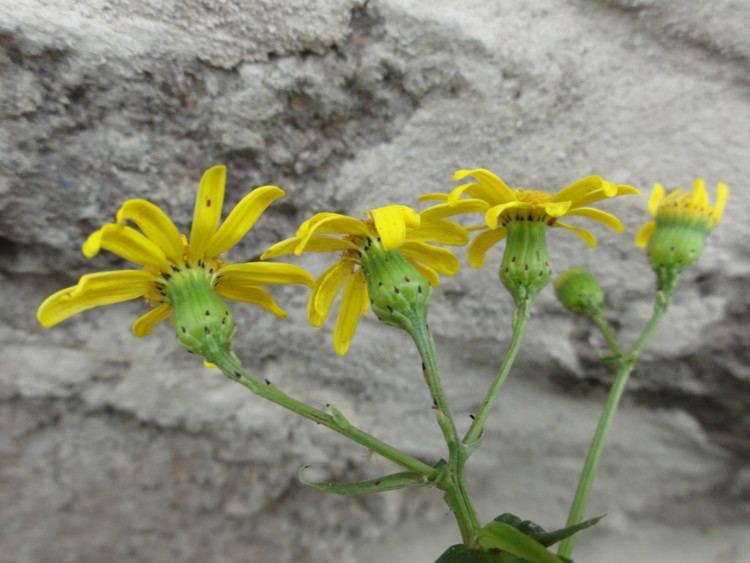
its own flower possess a stigma with characteristics of both the “dry” and “wet” types.
The fruiting heads are often nodding.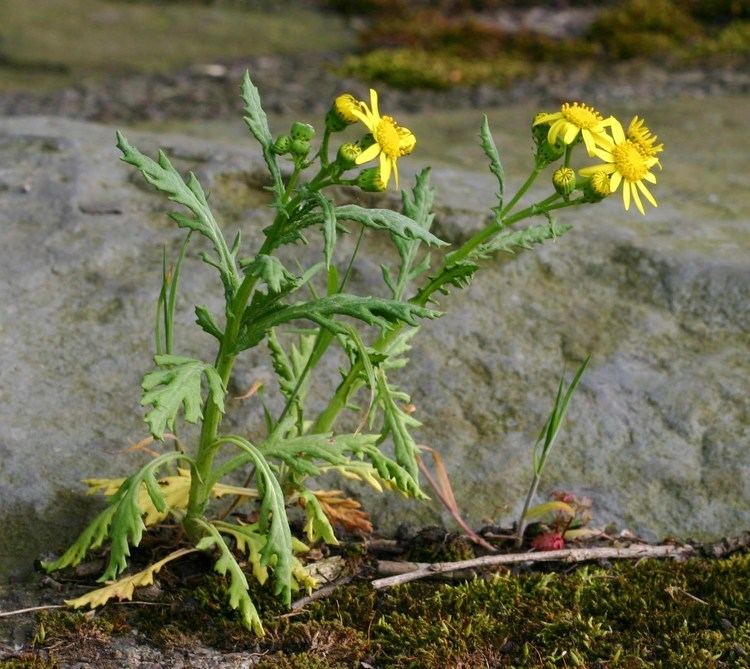
As a Senecio and a diploid Senecio squalidus is part of a species group along with S. flavus, S. gallicus, S. glaucus and S. vernalis, which are widespread geographically and interesting for the study of genetic differences in relation to the environment and plant evolution.
History
This Senecio was introduced into Britain via Francisco Cupani and William Sherard in the years of their visit 1700, 1701 and 1702 from Sicily where it lives as a native on volcanic ash to the Duchess of Beaufort's garden at Badminton. Later a transfer of the genetic material to the Oxford Botanic Garden by the "Horti Praefectus" (the title still given to the head gardener at the Oxford Botanic Garden) Jacob Bobart the Younger before his death in 1719 (which is also the same year that Bobart retired as Horti Praefectus and perhaps a good indication of when this species of ragwort and other invasive species might have "escaped" and started to make their home in the greater British Isles). The Sicilian ragwort escaped into the wild and grew in the stonework of Oxford colleges (with the specific mention of the Bodleian Library) and many of the stone walls around the city of Oxford. This gave the plant its common name, "Oxford Ragwort".
Carl Linnaeus first described Senecio squalidus in 1753, although there is a dispute as to whether the material came from the Botanic Garden or from walls in the city; the taxonomy for this species is further complicated by the existence of species with a similar morphology in continental Europe.
James Edward Smith officially identified the escaped Oxford ragwort with its formal name Senecio squalidus in 1800.
During the Industrial Revolution, Oxford became connected to the railway system and the plant gained a new habitat in the railway lines clinker beds, gradually spreading via the railway to other parts of the country. The process was accelerated by the movement of the trains and the limestone ballast that provides a well-drained medium which is an adequate replica of the lava-soils of its native home in Sicily.
During the 20th century it continued to spread along railway lines and found a liking for waste places and bombed sites after World War II which have a lot in common with the volcanic regions of home.
Recently, this and other Senecio and their differing tastes for self-incompatibility and self-compatibility have been the subject of study for the purposes of understanding the evolution of plant species as the genus finds new homes and pollen partners throughout the world:
Distribution
Senecio squalidus grows on scree in mountainous regions of native range, and earned its common name Oxford ragwort for its willingness and ability to grow in similar habitat elsewhere in the world.
Native
Senecio squalidus is considered to be a native of New Brunswick and Nova Scotia, Canada by the USDA Natural Resources Conservation Service while the same USDA other resource Germplasm Resources Information Network considers it to be native to Austria, Czech Republic, Slovakia, Germany, Switzerland, Albania, Bulgaria, Greece, Crete, Italy, Sardinia, Sicily, Romania, Bosnia and Herzegovina, Croatia, the Republic of Macedonia, Montenegro, Serbia, Slovenia.Current
AfricaNorthern Africa: MoroccoAmericaNorth America: New Brunswick, Nova Scotia, British Columbia, CaliforniaEuropeNorthern Europe: Denmark, Germany, Republic of Ireland, Netherlands, Norway, Sweden, United KingdomMiddle Europe: Austria, Czech Republic, Hungary, Slovakia, SwitzerlandEast Europe: Poland,Southeastern Europe: Albania, Bosnia and Herzegovina, BulgariaSouthwestern Europe: France, SpainSouth Europe: Croatia, Crete, Greece, Italy, Republic of Macedonia, Romania, Sardinia, Serbia, Sicily, SloveniaRange Maps
Predators
S. squalidus is a food plant for some insects, for example:
Flies
Gall flies (Diptera: Tephritidae):
Fungi
Most Senecio, including S. squalidus are susceptible to rust and other fungus and mildews:
Rust fungus Uredinales